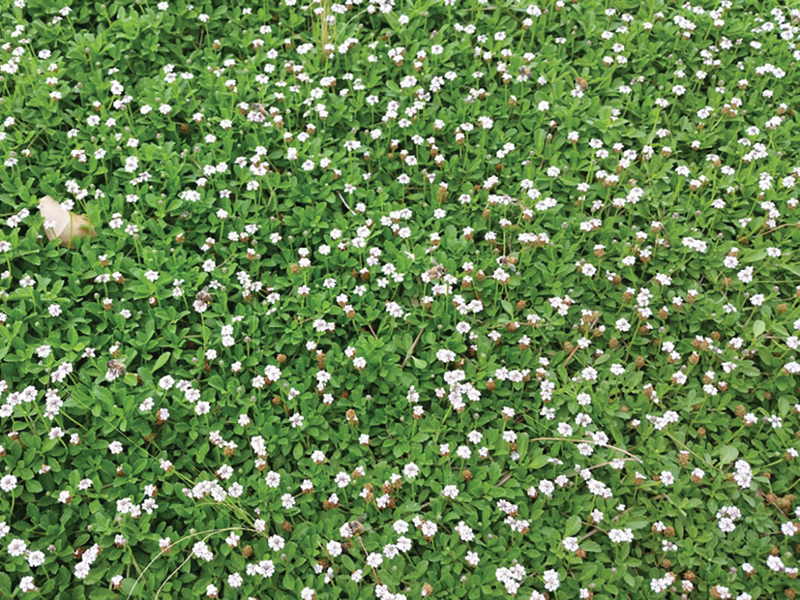
Photo by Worku Burayu
Kurapia (Lippia nodiflora), a non-invasive, sterile ground cover, was introduced from Japan to the United States and tested for salinity and drought tolerance in California. Kurapia tolerates a pH of 4 to 9, temperatures of 13 F to 120 F (11 C to 49 C) and salinity up to EC 7 decisiemens/meter.
This study evaluated the potential for its use as a replacement for turfgrass in non-play areas of golf courses in the low desert of Arizona. We also tested herbicides to determine whether they could safely be used to maintain weed-free Kurapia.
Preliminary results from growing Kurapia under deficit irrigation and evaluating its tolerance to pre- and post-emergence herbicides in the low desert of Arizona demonstrated a 90% survival rate of the planted Kurapia plugs; lateral plant growth as great as 2 feet (61 cm) in three months; long-season flowering from May to October that attracted many pollinators; and safe potential use of three pre-emergence and five post-emergence herbicides. Distribution uniformity of irrigation water appeared to be important for uniform growth rate of Kurapia.
Additional studies are needed to generate more local information to better understand Kurapia’s water and nutritional needs, as well as its ability to compete against weeds and insect pests.
— Worku Burayu, Maricopa County Cooperative Extension, University of Arizona, Phoenix, and Kai Umeda, University of Arizona
Editor’s note: An earlier version of this summary was published in the 2016 ASA-CSSA-SSSA Meeting Abstracts, ASA, CSSA and SSSA, Madison, Wis.
Teresa Carson is GCM’s science editor.